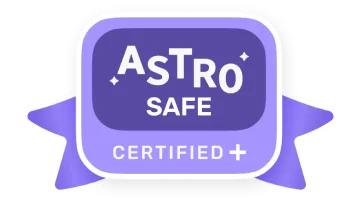Great essays don’t start with perfect sentences, they start with a clear plan. This guide walks you from brainstorming essay topics to a clean essay outline, then through revision with checklists, examples, and quick wins you can use today.
From idea to outline fast. A kid-safe helper that guides steps, not answers. Try the AI Homework Helper
Understand the Prompt (Purpose, Audience, Task)
Before you write a word, decode the assignment.
Look for action verbs: analyze, argue, compare, explain.
Identify the claim: What, exactly, do you need to prove or show?
Know your limits: length, sources, text evidence rules, MLA requirements.
Audience check: teacher? classmates? a formal reader? This affects tone and detail.
Mini-check: Can you paraphrase the prompt in one sentence? If not, ask a clarifying question before you outline.
Brainstorm Topics You Can Actually Defend
Skip the blank-page stare. Try one or two of these for 3–5 minutes each:
Freewrite: Write nonstop about the text/topic. Circle your strongest line.
Question storm: Who? What? Why? How? So what?
Mind map: Topic → subpoints → examples or quotes.
T-chart: Reasons for vs against a claim (helps with counterclaims).
Narrow your angle. “Friendship in Charlotte’s Web” is broad; “Wilbur’s friendships show that loyalty changes his fate” is focused and defensible.
Stuck on topics? Ask the helper for 5 prompt-friendly ideas, then pick one to defend.
Build a Thesis That Guides the Paper
Section | Details |
Build a Thesis That Guides the Paper | A strong thesis points the way for you and your reader. |
Argumentative Thesis | Formula: Claim + 2–3 reasons you’ll prove. |
Example (Argumentative) | “School uniforms improve focus and reduce social pressure by simplifying choices and lowering costs.” |
Literary Thesis | Formula: Interpretation + device(s) + effect on meaning. |
Example (Literary) | “In The Giver, color imagery and shifting point of view show how control hides truth.” |
Thesis Tests (Checklist) | Debatable? • Specific? • Aligned to the prompt? • Preview reasons? |
Choose a Structure That Fits (Not Just 5 Paragraphs)
There’s nothing wrong with the five paragraph essay for a timed task. But choose the frame that fits your claim.
Classic 5-paragraph: Intro → Body 1 → Body 2 → Body 3 → Conclusion.
Flex/argument: Intro → Point 1 → Point 2 → Counterclaim → Rebuttal → Conclusion.
Compare/contrast: Block (A then B) or alternating (A1/B1, A2/B2…) whichever keeps the logic clear.
Outline in 10 Minutes (Template You Can Copy)
Intro
Hook (fact, brief scene, or question with a real answer)
Context (1–2 sentences)
Thesis (last sentence of the intro)
Body Paragraphs (PIE / TEEAL model)
Topic sentence (mini-claim)
Evidence (quote, detail, example)
Analysis (why it proves your point no plot summary)
Link/transition (tie back to thesis and point to the next paragraph)
Conclusion
Restate the thesis with new words
Synthesize the main insights
Answer “So what?” in one sentence
Download idea: One-page Essay Outline Template with boxes for topic sentences, evidence, and transitions.
Try the kid-safe AI Homework Helper to brainstorm topics, shape a thesis, build an outline, and get revision prompts without writing the essay for you.
Find and Use Evidence the Right Way
Paraphrase when the exact words don’t matter.
Direct quote when the wording is powerful or precise.
Avoid dropped quotes. Use the quote sandwich: introduce → quote → analyze.
Keep a quick evidence log while reading: page/line, what it shows, how it supports your claim.
Thesis support rule: Every body paragraph should include evidence and analysis that clearly connects to the thesis. If it doesn’t, cut or move it.
Write a Strong Introduction
Hook with something concrete (a brief image, a surprising fact, a clear question).
Give just enough background to aim your thesis.
Place the thesis statement at the end of the intro for easy navigation.
Topic Sentences and Transitions That Flow
Topic sentence = mini-claim. It tells the reader what this paragraph proves, not just discusses.
Useful transition words for essays: moreover, however, therefore, for example, ultimately, meanwhile, in contrast, as a result.
Bridge ideas explicitly: cause → effect, claim → evidence, counterclaim → rebuttal.
Paragraph Model You Can Copy (PIE/TEEAL)
Element | Content |
Prompt (example) | Explain how Jonas changes in The Giver and how that change reveals a theme. |
Topic Sentence (Claim) | Jonas’s awakening begins when he first sees color, which exposes the cost of a controlled society. |
Evidence | When the Giver shows Jonas the red sled, Jonas realizes “the sameness” has removed choice and feeling. |
Analysis | The color is more than a new detail; it symbolizes everything missing—joy, pain, and decision. By understanding this loss, Jonas recognizes that safety without choice is not truly living. |
Link | This moment sets up his later decision to leave, showing the novel’s theme: freedom requires risk. |
Homework helps that scale. Guided steps your child can follow independently.
Conclusion Without Repeating the Intro
Restate your thesis with new wording.
Pull the key ideas together; show how they add up.
End with a broader insight or next step no brand-new evidence.
Template: “Taken together, [point 1] and [point 2] show that [reframed thesis]. This matters because [why a reader should care].”
Revise Essay Checklist (Content → Style → Conventions)
Content & Organization
Thesis is precise and arguable
Each paragraph has a topic sentence that supports the thesis
Evidence is relevant and cited; analysis outweighs summary
Counterclaim is addressed (if argument)
Style
Strong, active verbs; precise nouns
Sentence variety (short + long)
Transitions move logic forward
Conventions
Spelling and punctuation clean
MLA format: in-text citations and Works Cited basics correct
Final pass
Read aloud and cut 10% of fluff
Fix any spots where you stumble
Editing vs Revising (Know the Difference)
Revising = ideas and structure: thesis, paragraph order, analysis depth, transitions.
Editing = correctness and polish: spelling, punctuation, formatting.
Order matters: Revise first. Edit last. Don’t polish lines you might delete.
Peer Review Protocol (10 Minutes)
Read for gist: What’s the claim? Summarize it in one sentence.
Read for proof: Which paragraph is strongest? Which is weakest? Why?
Specific feedback: Where does analysis stop too early? Where does the quote need context?
Writer action: Choose two changes to make immediately.
Peer review checklist for the reviewer:
I can find and restate the thesis
Every paragraph has a clear topic sentence
Evidence is connected to claims with analysis
Transitions make sense
Quick MLA Format Guide (Just Enough)
In-text citations: (Author page) → e.g., (Lowry 76).
Works Cited basics: Author. Title. Publisher, Year.
Document basics: 12-pt readable font, double spacing, page number with last name, 1-inch margins, centered title (no bold/underline).
Common Pitfalls (and Fast Fixes)
Summary instead of analysis → After each quote, add “This shows that…” and finish the thought.
Broad thesis → Replace with one precise claim you can prove with 2–3 reasons.
Weak topic sentences → Rewrite as mini-claims, not labels.
No transitions → Add bridge phrases to show cause/effect or contrast.
Over-quoting → Paraphrase where possible; analyze more than you quote.
FAQs
How do I brainstorm essay topics quickly?
Freewrite for three minutes, circle your best line, then turn it into a question you can answer with evidence.
What is a strong thesis statement?
It’s specific, debatable, and aligned to the prompt. It previews your reasons without listing every detail.
How do I write a topic sentence?
State the mini-claim of the paragraph; it should connect directly to the thesis.
What’s the difference between editing vs revising?
Revising changes ideas and structure. Editing polishes grammar and format.
How long should a conclusion paragraph be?
About 4–6 sentences: synthesize, restate the thesis in new words, and explain why it matters.


